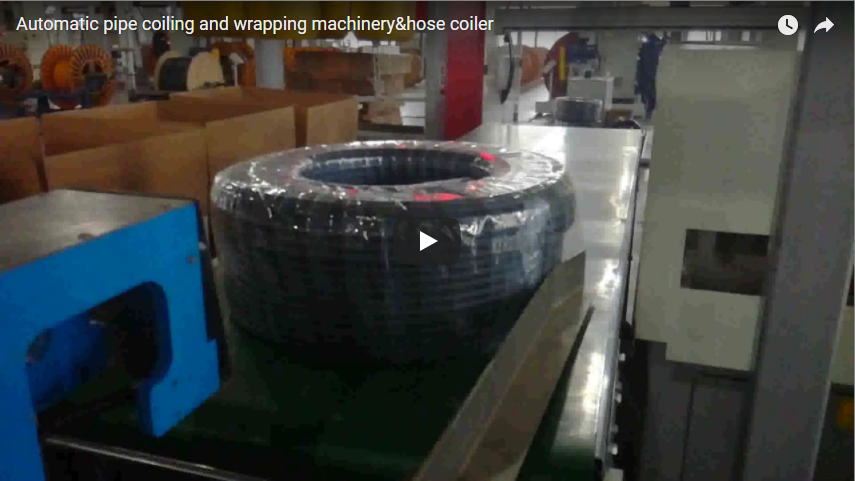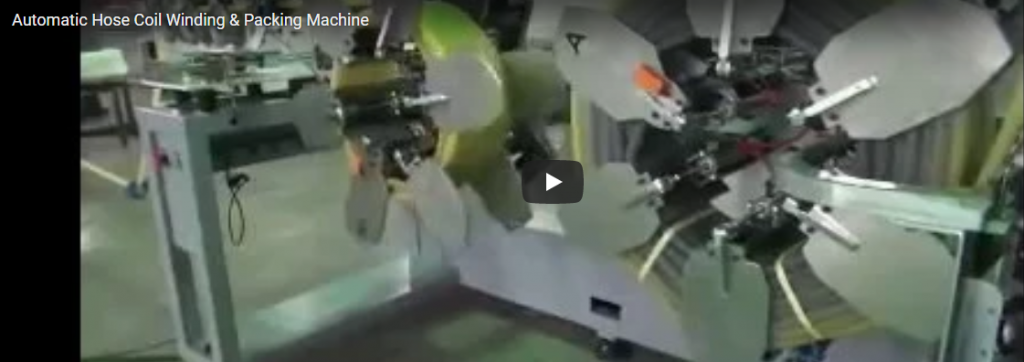Steel Coil Packaging Lines: Boosting Efficiency and Protection in Metal Processing
The demands on modern steel service centers and metal fabricators are relentless. Faster turnaround times, stringent quality requirements, and the constant pressure to optimize costs mean every step in the production chain is under scrutiny. One area ripe for significant improvement is the final packaging of steel coils. While traditional manual methods persist, embracing automated steel coil packaging lines is no longer just an upgrade—it's a strategic necessity for staying competitive.
1. The Limitations of Traditional Steel Coil Packaging
Manual or semi-manual packaging processes for steel coils, often involving significant labor input for wrapping, strapping, and handling, present inherent drawbacks that impact efficiency, safety, and product integrity:
- Inconsistent Quality: Manual application of wrapping materials (like stretch film or VCI paper) can lead to uneven tension, inadequate overlap, and missed spots, increasing the risk of corrosion and physical damage during handling and transit.
- Safety Hazards: Manually manipulating heavy coils and packaging materials poses risks of strains, crush injuries, and falls. Repetitive motions can also lead to ergonomic issues.
- High Labor Costs: Manual packaging is labor-intensive, diverting skilled personnel from value-added tasks and contributing significantly to operational overheads.
- Slow Throughput: The time required for manual packaging creates bottlenecks, limiting overall plant output and potentially delaying customer shipments.
- Material Waste: Inconsistent application often leads to excessive use of packaging materials, increasing both cost and environmental impact.
Industry data suggests that inadequate packaging contributes significantly to material damage, with some estimates placing transit and handling damage for traditionally packaged coils between 5% and 15%, directly impacting profitability.
2. Anatomy of a Modern Steel Coil Packaging Line
Automated steel coil packaging lines are sophisticated systems designed for efficiency, protection, and integration. While configurations vary based on specific needs, common components and design features include:
2.1 Key Components and Structure:
- Entry Conveyor/Loading Station: Often utilizes V-saddle conveyors or coil cars for safe and efficient loading of coils onto the line. Sensors detect coil presence and dimensions.
- Centering Device: Automatically positions the coil precisely for subsequent operations, ensuring uniform packaging.
- Wrapping Station (Orbital Wrapper): The core of the system. A rotating ring carries the film/paper dispenser (shuttle) and passes it through the coil eye, wrapping the coil circumferentially. Key technical aspects include:
- PLC Control: Siemens, Allen-Bradley, or similar PLCs manage wrapping programs, tension control, overlap settings, and cycle times.
- Variable Speed Drives (VSDs): Allow precise control over ring rotation and film feed rates.
- Powered Rollers: Support and rotate the coil during wrapping for consistent coverage.
- Automatic Film/Paper Cut & Clamp: Reduces manual intervention and cycle time.
- Circumferential Strapping Unit: Applies steel or PET strapping around the outer circumference for added security and bundle integrity. Often includes automated strap feeding, tensioning, sealing (friction weld or metal seal), and cutting.
- Through-the-Eye Strapping Unit (Optional): Places straps radially through the coil eye, preventing telescoping, particularly for narrower or softer coils.
- Weighing Station: Integrated scales record the final packaged weight for shipping documentation and inventory management.
- Labeling System: Automatically prints and applies labels with product information, barcodes, and customer details.
- Exit Conveyor/Tilter/Stacker: Safely transports the finished coil off the line, potentially tilting it for palletizing or stacking it for storage.
2.2 Design Considerations:
- Heavy-Duty Construction: Built with robust steel frames and high-quality components to withstand the demanding industrial environment and heavy coil weights (often up to 30+ tons).
- Modular Design: Allows for customization and future expansion or reconfiguration as needs evolve.
- Safety Integration: Comprehensive safety features including light curtains, emergency stops, safety fencing, and PLC-based safety logic adhering to standards like ISO 13849.
- HMI (Human-Machine Interface): Touchscreen panels provide intuitive control, recipe management, diagnostics, and real-time status monitoring.
- Material Flexibility: Designed to handle various packaging materials: stretch film (different gauges), VCI paper/film, HDPE woven fabric, protective edge boards.
3. Technical Data: Manual vs. Automated Packaging Comparison
The advantages of automation become clear when comparing key performance indicators:
| Parameter | Manual Packaging | Semi-Automated Line | Fully Automated Line |
|---|---|---|---|
| Packaging Speed | 1-3 Coils/Hour (Est.) | 5-10 Coils/Hour | 15-30+ Coils/Hour |
| Labor Requirement | 2-3 Operators | 1 Operator | 0-1 Supervisor |
| Film/Material Usage | High Variability | Optimized (-15%) | Highly Optimized (-30%) |
| Damage Rate (Est.) | 5-15% | 2-5% | <1% |
| Consistency | Low | Moderate | High |
| Safety Risk | High | Moderate | Low |
| Typical ROI Period | N/A | 24-36 Months | 12-24 Months |
| System Footprint (Typical) | Variable / Dispersed | 10m x 5m | 15m x 8m (approx.) |
| Control System | Manual | Basic PLC | Advanced PLC/HMI/SCADA |
Note: Figures are indicative and vary based on coil size, packaging complexity, and specific line configuration.
4. Operational Experience: A Fabricator's Perspective
"Before upgrading, packaging was our bottleneck," shares John Miller, Operations Manager at a Midwest steel service center. "We had two guys wrestling with stretch film and banding guns all shift. Consistency was an issue – we’d get occasional complaints about rust spots or transit damage. Safety incidents, mostly minor strains, weren't uncommon."
"We installed a fully automated line last year. The difference is night and day. Loading is done via coil car, the system measures the coil, selects the right wrapping program from the HMI, wraps, straps, weighs, and labels it. One operator now oversees the entire process and handles loading/unloading.
Key improvements we've seen:
- Throughput: We’ve easily doubled our packaging rate during peak times. The line consistently packages a standard coil in under 3 minutes.
- Quality: Damage claims related to packaging have dropped to virtually zero. The wrap is tight, uniform, and the VCI paper application is flawless.
- Material Savings: The automated stretch wrapper uses precise tension control and overlap settings. We estimate a 25-30% reduction in film consumption per coil.
- Safety: Manual handling risks are eliminated. The area is guarded, and operators interact via the control panel outside the safety zone.
- Data Integration: The line feeds weight and packaging data directly into our ERP system, improving inventory accuracy and shipping documentation."
"Maintenance involves routine checks – lubricating bearings, checking sensor alignment, inspecting cutters and sealers. The PLC diagnostics help pinpoint issues quickly. Training was straightforward; the HMI is intuitive. The initial investment was significant, but the ROI in terms of labor savings, reduced damage, and increased throughput made it a clear win."
5. Integrating Automation: Key Considerations
Implementing an automated packaging line requires careful planning:
- Needs Analysis: Define coil size ranges (ID, OD, width, weight), required throughput, packaging materials, level of automation desired, and available floor space.
- Vendor Selection: Evaluate suppliers based on technical expertise, machine reliability, customization capabilities, service support, and industry experience. Request references and see similar lines in operation if possible.
- Layout & Integration: Plan the line's position relative to slitting lines, cranes, and shipping docks. Ensure seamless integration with existing material handling systems and plant control networks (MES/ERP).
- Installation & Commissioning: Allocate sufficient time and resources. Ensure proper operator and maintenance training is provided by the vendor.
- Performance Monitoring: Track key metrics (throughput, uptime, material usage) to ensure the line meets performance targets and identify areas for further optimization.
6. The Future: Smarter Coil Packaging
The evolution continues with Industry 4.0 integration:
- Predictive Maintenance: Sensors monitoring vibration, temperature, and power consumption can predict component failures before they occur.
- AI-Powered Optimization: Systems may learn to optimize wrapping parameters based on real-time sensor feedback or historical performance data.
- Enhanced Connectivity: Remote monitoring, diagnostics, and even remote assistance from vendors become standard.
- Sustainable Materials: Lines designed to handle newer, eco-friendly packaging materials efficiently.
7. Conclusion: Investing in Competitiveness
Upgrading to an automated steel coil packaging line is a strategic investment that directly addresses key challenges in the metal processing industry. By enhancing product protection, significantly boosting operational efficiency, improving workplace safety, and reducing material waste, these systems deliver a compelling return on investment. In a market demanding speed, quality, and cost control, modernizing the final step of your production process is crucial for maintaining customer satisfaction and securing a competitive edge. The technical capabilities and tangible benefits make automated packaging a cornerstone of efficient, modern steel handling operations.






